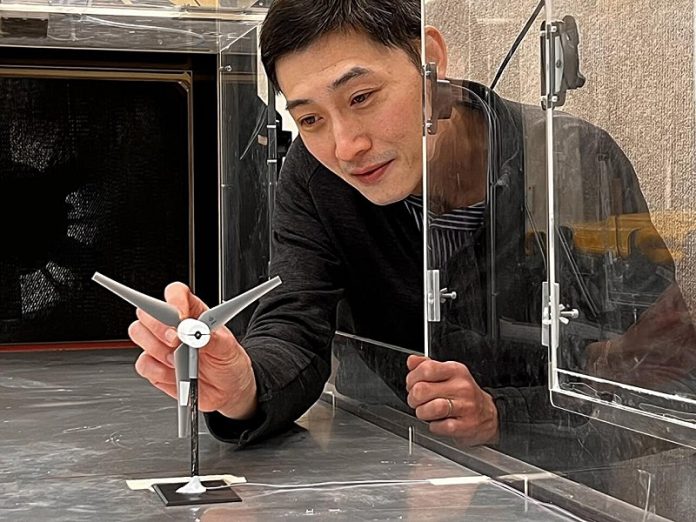
Researchers from the University of Adelaide have discovered that wind farms could benefit from slowing down some of their turbines.
This approach could improve efficiency, extend the life of wind turbines, and reduce noise pollution.
The research, led by Dr. Rey Chin, offers a fresh perspective on how turbines interact with each other in clustered wind farms, with potential cost-saving benefits for the industry.
Wind turbines work by capturing wind energy to produce electricity, but when they are placed close together in wind farms, the turbines at the front can impact those behind.
Dr. Chin’s team found that when the leading turbines spin at full speed, they create a “wake,” which reduces the amount of energy the turbines behind can capture.
This wake effect can lower the efficiency of the following turbines by as much as 30%.
The researchers suggest that slowing down the turbines at the front can help the turbines behind spin at a more consistent and faster rate.
Although this may slightly reduce the total energy output of the wind farm, the benefits outweigh the small loss.
For example, slower turbines generate less noise, making wind farms more acceptable to communities nearby.
Wind farms have become a major source of green energy in Australia, with 110 wind farms spread across the country. Some of these farms are aging, with 31 of them being over 15 years old.
Wind turbines are usually built to last around 20 to 30 years, but by adjusting their speed, their lifespan could be extended, which would reduce maintenance costs. Each wind turbine costs approximately AUD $7 million to build, and decommissioning them when they’re no longer operational can cost half a million dollars per turbine.
“Currently, wind turbine technology has been developed quickly, with little thought for end-of-life planning,” says Dr. Chin. He believes that slowing the turbines could cut down on wear and tear, increasing their longevity and improving cost-effectiveness.
The team also pointed out that turbines are often over-designed, meaning that adjustments like this could simplify the manufacturing process and reduce costs.
Noise pollution is one of the biggest concerns for people living near wind farms, and it’s often a reason for opposition to new projects. Slower turbines create less noise, which could make wind farms more acceptable to the public.
By planning future wind farms with this new approach, the industry could build more cost-effective, quieter, and longer-lasting wind farms.
This research, published in the Journal of Wind Engineering and Industrial Aerodynamics, is expected to help the wind farm industry design better future projects that benefit both the environment and local communities.



